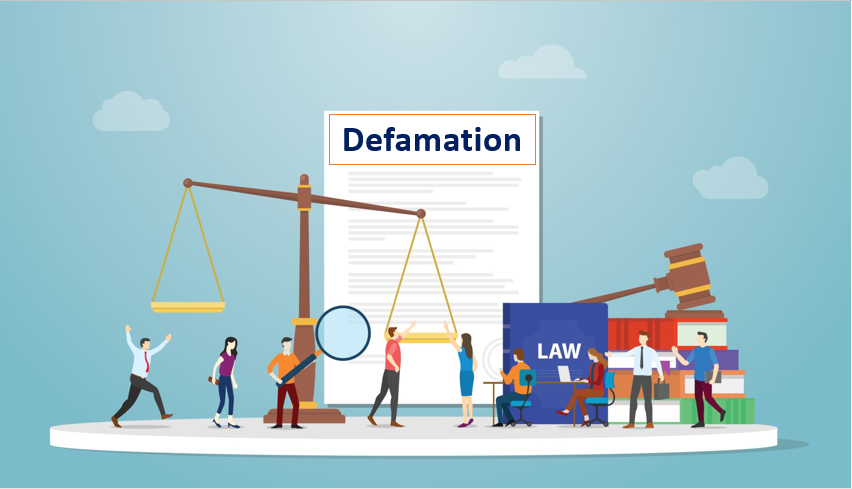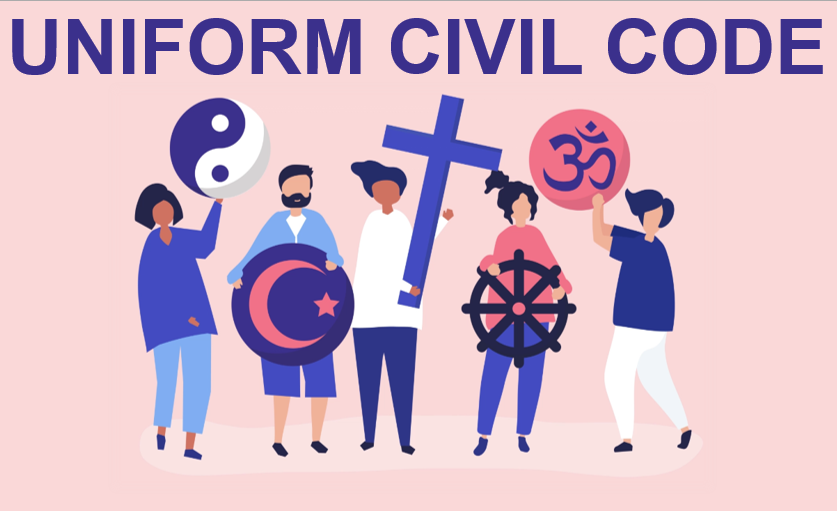Published on 15th April 2025
Authored By: Shriya Rajput
Amity university, Lucknow
Abstract
The Place of Worship Act, 1991 was inaugurated in India to protect the religious ‘status quo’ of places of worship as it stood on August 15, 1947. These laws designed to prevent any amendment to the religious nature of these sites, thereby assisting to avoids the potential conflicts and promoting the communal harmony. The act specifically prohibits the conversion of one religious place of worship into another. While it has been commended for promoting religious peace and protecting disputes, it has also faced criticism for restricting religious freedom and conflicting with constitutional rights. Critics argue that it limits the freedom to practice and express religion by chilling the historical context of religious sites. This article highlights the both sides of the debateable arguments, analysing the balance between law and faith, and the challenges of preventing societal or religious peace without violating on individual religious rights. Through this critical analysis, the article seeks to understand whether the law successfully balances the need for communal harmony with the need for religious freedom in a diverse society like India.
Keywords: – place of worship act, 1991; constitutional rights; and law.
Introduction
Under the places of worship act (special provisions) act,1991, mention about the prohibition of conversion of one places of worship to any other places of worship. And it is mandatory that the religious character of place of worship must be remain same as it was on 15 august, 1947.There is only one exception of this act is Babri masjid site in Ayodhya, it excludes form the act because of ongoing litigation at that time.
The main purpose of this act is it promote the peace and harmony between the religious and protect the society form the dispute between the religious sentiments and character of places of worship.
Some of the critics argue that the Act is arbitrary because it uses a single date (August 15, 1947) to determine the religious character of a place of worship, potentially overlooking historical injustices that may have occurred before that date.
India recognizes as a nation with religious diversity, the intersection of law and faith is often a complex issue. The Place of Worship Act, 1991, is an important legislative attempt to manage this elegant balance. The Act aims to preserve the religious status quo of places of worship as it stood on August 15, 1947, preventing the conversion of religious sites from one religion to another. This legal provision has advance implications for both the protection of religious sentiments and the protection of constitutional rights such as the freedom to practice religion.
The importance of this balance is a tension between two things, the law which is supposed to protect secularism, public order, social harmony, and faith, an intimate and sacred aspect of human beings’ lives. And while the law embraces an intention to promote peace and stave off religious tensions, faith itself is typically considered a living, breathing, fluid thing that is greater than the law of the land. By analysing this tension we can begin to consider how legal frameworks might unconsciously prevent.
In the end, the discourse is key to understanding how India’s legal framework will negotiate the difficult terrain between the promotion of religious harmony and the rights of individuals to worship freely. Critiquing the Place of Worship Act helps us assess its implications for freedom of religion, the sanctity of secularism and much more in a country where faith and law intersect in many sensitive ways.
Historical Context and Purpose of the Act
Section 3 of the Place of Worship Act, 1991 is popularly known as status quo clause and is meant to freeze the religious character of places of worship as on August 15, 1947. This implies that any worship site (be it temple, mosque, church, or any religious place) cannot be converted to another religion. For instance, a mosque that existed in 1947 cannot be made into a temple or a church today. The goal of this provision is to firmly stop the religious disputes over these worship place by making sure they remain the same as they were on India’s Independence Day.
Balancing Act between Faith and Law: The Courts play a key role in interpreting the law while balancing individual rights with collective national harmony.
The aim is to maintain peace by preventing new disputes or conflicts regarding the religious identity of significant places of worship. This law was specifically enacted to avoid a recurrence of the tension and violence experienced in the past when religious sites were altered or contested. However, this law has ignited some discussions. Some individuals argue that it restricts the freedom to practice and express religion, particularly if a community is passionate about reclaiming or altering a site. Others believe it is a practical approach to preserving harmony in a nation with a diverse array of religious groups.
In India, this delicate issue of faith versus law is being scrutinized and interpreted by the courts. In seeking to prevent the disturbance of the religious identity of places of worship, the Place of Worship Act, 1991, must coexist with constitutional rights such as the freedom of religion, which facilitates the free exercise of faith by persons and communities.
Courts must negotiate the proper balance — protecting religious freedoms while also preserving the need for communally harmonious outcomes. This means they must balance the individual right of the citizen to practice their religion against the overarching public interest of maintaining peace and avoiding religious conflict.
In such cases, when disputes arise concerning religious sites, courts are often forced to assess whether any given actions of one party could damage the feelings or beliefs of another party.
Carefully balancing the rights of the individuals against the rights of the public and society these are in fact courts mediating between freedoms of an individual versus the welfare of good order and of society. Their interpretations can determine the scope of application for statutes such as the Place of Worship Act, and they must exercise the responsibility of ensuring that the legal system serves to benefit both religious belief and the secular tenets on which the country rests. Finding this balance is so crucial to a peaceful, pluralistic, and democratic society in India.
Practical Implications of the Act
- Babri Masjid/Ram Mandir Case
Babri Masjid/Ram Mandir Case is one of the most famous and controversial disputes in India, which was demolished in 1992 by a group of religious activists claiming it was the birthplace of Lord Ram. This incident sparked nationwide riots and decades of legal battles. The Place of Worship Act, 1991 played a crucial role here because it was intended to prevent such disputes by freezing the religious character of places of worship. However, the Babri Masjid case became an exception, as the Supreme Court’s verdict in 2019 allowed the construction of the Ram Mandir at the disputed site, while also directing the allocation of land for a mosque nearby. This case highlighted the limits of the Act, especially in the face of a longstanding, high-profile dispute where religious sentiments were deeply entrenched.
- Kashi Vishwanath Corridor Project
Another ongoing example is the Kashi Vishwanath Corridor project in Varanasi. This involves the development of a massive corridor to link the Kashi Vishwanath Temple with other temples and religious sites nearby. The project has led to the demolition of parts of old buildings in the area, and some critics argue that this could be seen as violating the status quo clause of the Place of Worship Act. While the project is aimed at enhancing the religious experience for pilgrims and tourists, it has sparked concerns about the preservation of the area’s historical and religious character, especially with respect to the impact on the surrounding sites and their historical identity.
- Other Ongoing Disputes
The Act’s limitations also come to the forefront in several other cases where religious communities seek the right to alter or reclaim religious sites, they believe were unjustly taken from them or converted during colonial or post-colonial times. For example, some communities may want to reclaim sites that were converted from their original religious identity, but the Place of Worship Act prevents them from doing so if the status of the site has been changed since 1947.
- Challenges in Implementation
From a practical point of view, the Place of Worship Act is difficult to implement fairly and transparently in cases where religious place has a complex history. The law’s attempt to “freeze” the status quo can be seen as an oversimplification, especially when it comes to places with a deep historical and cultural significance. The religious communities often feel strongly about these worship places, and the law may sometimes fail to account for the developing nature of religious practices and beliefs.
In real-life scenarios, the Place of Worship Act has both prevented and fuelled conflict over religious worship places. While it has achieved its goal of maintaining communal harmony by preventing new religious disputes, its rigid approach has created challenges when applied to specific, complicated situations like the Babri Masjid or Kashi Vishwanath Corridor. As India continues to grapple with its religious diversity, the law will need to evolve and adapt to address these complexes, often deeply emotional, disputes in a way that respects both legal principles and religious freedoms.
Table of argument
|
s.no |
Argument for Against |
Argument for Favour |
|
1 |
Violation of fundamental rights: – · Freedom of religion and right to manage religious affairs is mention under article 25 of the Indian constitution. This article is restricted under this act which limits the ability of religious community to reclaim their worship places. · This act creates bars from assign the legal recourse which considered as crime against Indian democracy. This prohibits the religious communities from pursuing justice through the legal system, undermining the principles of fairness and equal access to the judiciary. |
Preservation of Secularism and Public Order: – · Secularism is especially crucial in a country like India, which prides itself on being a multi-religious and secular nation. The Act ensures that no one religious community can unilaterally assert control over a place of worship, thereby maintaining equal respect for all religions. · It mainly protects the revolt arise from religious conflict over contested places of worship. |
|
2 |
Historical Injustices: – · Many religious communities believe their religious sites were forcibly taken over, destroyed, or converted under colonial rule or during periods of religious conflict. As ‘status quo’ was introduced in 15 august 1947, the law effectively rejects these religious communities an opportunity to redress these wrongs. This is main issue arise in these cases where evidence of historical injustice is compelling. |
Ensuring Peace and Harmony: – · Historically, disputes over the Babri Masjid have led to widespread violence and divisions between communities. The law ensures that the status quo is promotes peace and harmony over violence. · The law encourages people to focus on social cohesion rather than fighting over the past or on matter of religious sentiments. Instead of discuss again on centuries-old conflicts, now main moto is to create more inclusive, tolerant society that values unity.
|
|
3 |
Injustice and Discriminatory: – · This act is bias toward ‘Muslims,’ by protecting the conversion of mosques while not focus to provides the equal protection to Hindu religious sentiment including temples that may converted or destroyed. · By selectively the scheme of protecting one group’s religious sites, the law perpetuates ‘religious inequality,’ which can further enhance divisions and irritation between religious communities, rather than encourage the true secular and harmony. |
Preventing Exploitation of Religious Sentiment: – · Centre of attention is mainly towards protecting from exploitation of religious sentiments by politicians.
· This provision ensures that the religious significance of all communities is respected equally. |
|
4 |
Secularism vs. Religious Nationalism: – · This act derived as political driven measure, encouraging the religious nationalism rathe than a true and fair secularism. |
Support for the Rule of Law and Constitutionality: – · Justice, equality, and secularism soul of constitution mention under this act. · It maintains the balance between the social peace and harmony among the religious individuals. |
|
5 |
Arbitrary and Unfair Application: – · The Act classifies places of worship into two categories: those that existed on August 15, 1947, and those that have been converted or altered since then. · In current situation arbitrary is problematic because it formulates a difference that may not reflects the true and fair nature of religious place. · This act has no fair and transparent process for assessing the historical evidences. |
Avoiding Future Conflicts and Polarization: – This act more prioritizes the long-term peace instead of short-term gains. |
Conclusion
In conclusion, the Places of Worship (Special Provisions) Act, 1991 serves as a critical attempt to maintain harmony and prevent religious conflict by preserving the status quo of religious sites in India. The law, by prohibiting the conversion of the character of any religious place, reflects the delicate balance between legal governance and respect for faith. However, the Act also raises significant debates on whether it overly restricts the freedom to alter or reclaim sites, potentially infringing upon the principles of justice and equality. As such, its application and interpretation require a nuanced understanding of both legal safeguards and the sensitivities surrounding religious beliefs. While it seeks to foster peace, the law must continually be examined to ensure that it does not inadvertently perpetuate historical grievances or infringe upon the rights of marginalized communities. Ultimately, the balancing act between law and faith, as enshrined in this Act, remains a critical challenge in India’s dynamic religious landscape.
Reference
- Live law .in
- Indian kanoon
- The Hindu
- The Indian Express


